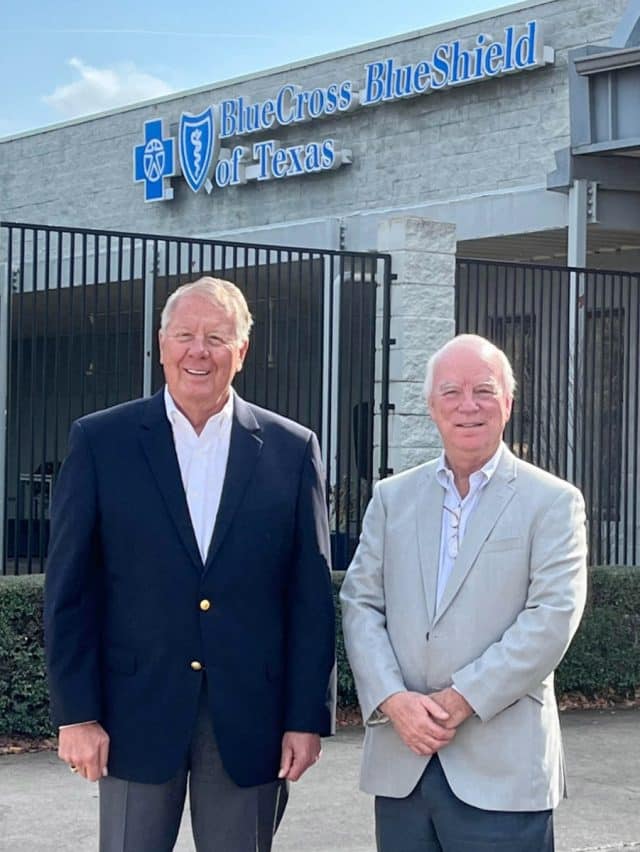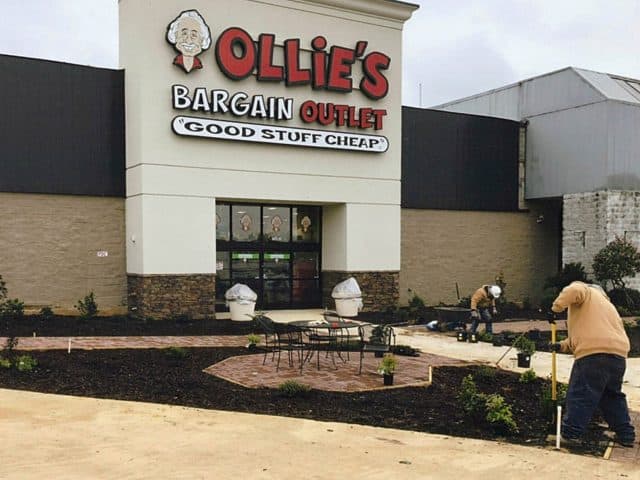Not Dead Yet: Reinventing Shopping Malls
In the summer of 2017, the mall in Marshall, Texas, appeared to be on life support. JCPenney, its last remaining flagship store, closed and only seven retail tenants remained in what threatened to become a cavernous shell. “East Texas shoppers are coming to terms with the fact that this could spell the end for the mall they grew up going to,” according to a story in the local newspaper, which read like an obituary for the city’s lone shopping mall.

“They had us buried and in the cemetery,” said Kelley Bergstrom (MBA ‘68), one of the owners of the 43-year-old mall and a commercial real estate investor and developer. (UF’s real estate center was named the Kelley A. Bergstrom Real Estate Center in 2006 after Bergstrom established a major endowment to support the center.)
But Bergstrom and his partners weren’t ready to turn off the lights on a business that still had several things going for it: a good location, plenty of parking and some stable nonretail tenants, including a community college satellite and a Blue Cross and Blue Shield call center. In time, Bergstrom and his partners settled on a $4.5 million plan to convert the mall into a “value retail center.” They reconfigured spaces, expanded the rentable space into mall common areas, reoriented entrances and exits, and rechristened it as Marshall Place. Then they leased spaces at higher rents to discount retailers Hobby Lobby, Burkes Outlet and Ollie’s Bargain Outlet.
Malling of America began in 1956
Eisenhower was president and rock ‘n’ roll was shaking up the music industry when the nation’s first enclosed, temperature-controlled mall — Southdale Shopping Center in Edna, Minnesota — opened in 1956. It sparked the rise of these pinnacles of consumerism, embraced by folks drawn to shopping under one roof at suburban locations with lots of parking. In their heyday, malls were places to see and be seen for everyone from teenagers hanging out to seniors walking concourses for exercise, and they even served as the setting for now cult movies like “Mallrats” and “Fast Times at Ridgemont High.”

But malls began to struggle as surveys showed Americans no longer saw shopping as a leisure activity, according to a fall 2022 report from the Federal Reserve Bank of Richmond. In recent years, malls have suffered from the closing of anchor stores, increased online shopping and consumers’ preference for budget-friendly retailers in big boxes. Time magazine once ran a cover story entitled “Kiss Your Mall Goodbye” about how shopping online is cheaper and better than going to the store. Mall nostalgia is now a thing, and websites like Deadmalls.com track deceased ones and a video series on YouTube tours eerily decaying and empty malls. The COVID-19 pandemic intensified the doomsday predictions as consumers showed preference for walkable outdoor spaces. A 2017 report by Credit Suisse forecast one in four U.S. malls would close by 2022.
Yet, it appears the reports of the death of malls have been greatly exaggerated. The latest data show little change in the number of malls nationwide in recent years. As of Dec. 31, there were 1,354 enclosed retail shopping centers including malls and other major retail properties, a decline of 3.2% from 1,398 in 2011, according to the Directory of Major Malls/Shoppingcenters.com, a Nyack, N.Y.-based retail consulting firm and data publisher. (A precise number of malls is fuzzy as it depends on who is doing the counting and what properties they count; for example, CoStar reported 1,135 malls in 2022.) The Directory of Major Malls breaks the category into seven segments: regional and super-regional malls ranging from 500,000 to more than 1 million square feet, and smaller properties classified as value retail, power, lifestyle/mixed use, entertainment, and community centers. (Some of the properties are not — or are no longer — enclosed.)
Adaptation
Marshall Place stands as one of the latest examples of how otherwise struggling malls are getting new lives. According to 2019 research by Georgia Tech urban design professor Ellen Dunham-Jones, roughly 500 U.S. malls have been repurposed into different uses, often as offices, ranging from call centers to high-tech spaces, and all or part of malls are now devoted to educational, residential, medical entities, and even houses of worship. Southland Christian Church purchased the former Lexington Mall in Kentucky and transformed it from an eyesore into a satellite campus. Austin Community College’s piecemeal purchase of the entire Highland Mall in Austin, Texas, is heralded as a model of adaptive reuse. In Florida, a Nashville investor purchased the shuttered DeSoto Square Mall in Bradenton and a Winter Park developer submitted a proposal in December 2022 to build 240 garden-style apartments in its parking lot.
“We’re certainly seeing significant changes going on, even prior to the pandemic, as conventional properties have outlived the purpose for the market they were built,” said Tama Shor, president of the Directory of Major Shopping Malls.
Joel Davis, director of the Miller Retail Center at the University of Florida’s Warrington College of Business, said by and large traditional malls are not nearly as profitable as they once were. The ones doing the best have morphed into regional destinations and “lifestyle centers,” where shopping is a sideline and consumers are drawn to other attractions, such as theaters, arcades, exercise spaces, and higher quality drinking and eating establishments instead of the homogenous offerings from national chains in mall food courts of old.
To be sure, lots of the old malls remain. Southdale — the first U.S. mall — continues, now under the ownership of Simon Property Group, America’s largest mall owner. Southdale is just six miles from the giant Mall of America, North America’s largest shopping mall with 5.6 million square feet, 520 stores, 60 restaurants, a theme park, cinema and aquarium. The Mall of America’s developer, Triple Five Group, hopes to go even bigger in South Florida. Since 2015, it has pushed ahead a proposal to build American Dream Mall in northwest Miami-Dade County, with reportedly more than two-thirds of its 6.2 million square feet devoted to entertainment uses, including an amusement park, skating rink, indoor ski slope, submarine rides, a theater complex and an arts center for live performances.
Clearly there’s still life in shopping malls, whether they’re high-end destination palaces or little retail havens. Back in Texas, folks in Marshall are undoubtedly pleased their hometown mall was spared. “They’re pretty happy we stayed with it, and they don’t have an eyesore that’s all boarded up,” Bergstrom said. He and the mall’s other owners are benefiting, too. “During 2022 we brought our occupancy back to historical levels and only have one space to lease,” said Jerry Tate, one of Bergstrom’s two partners.
